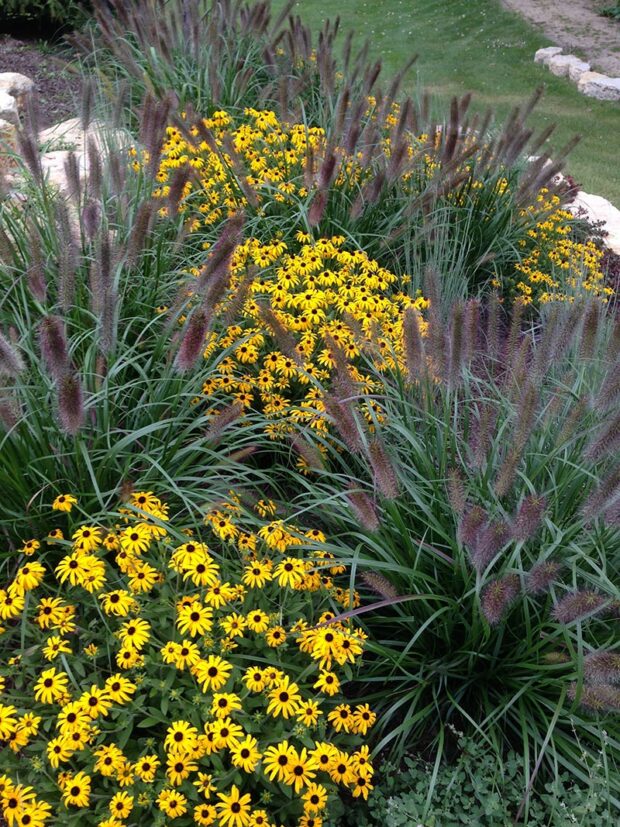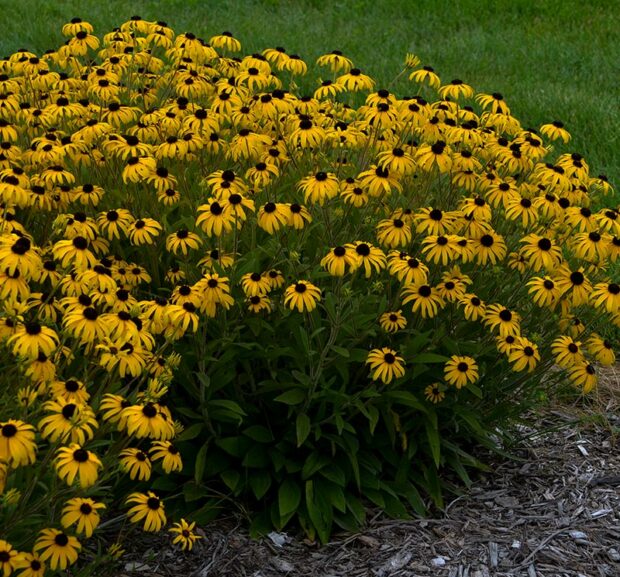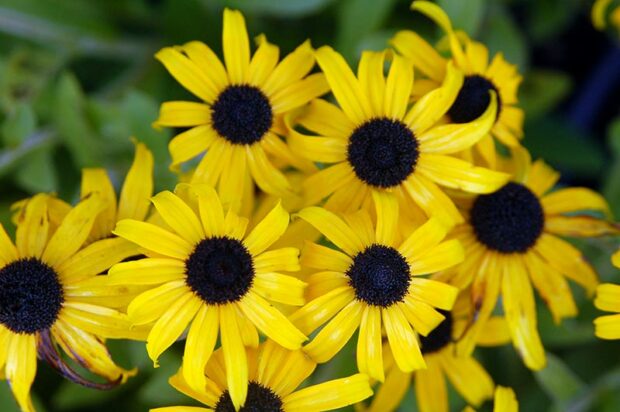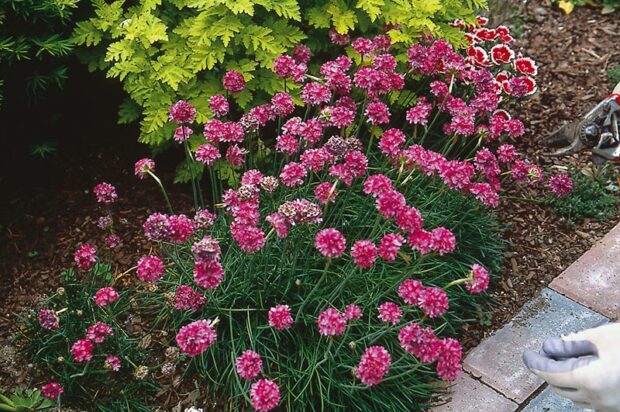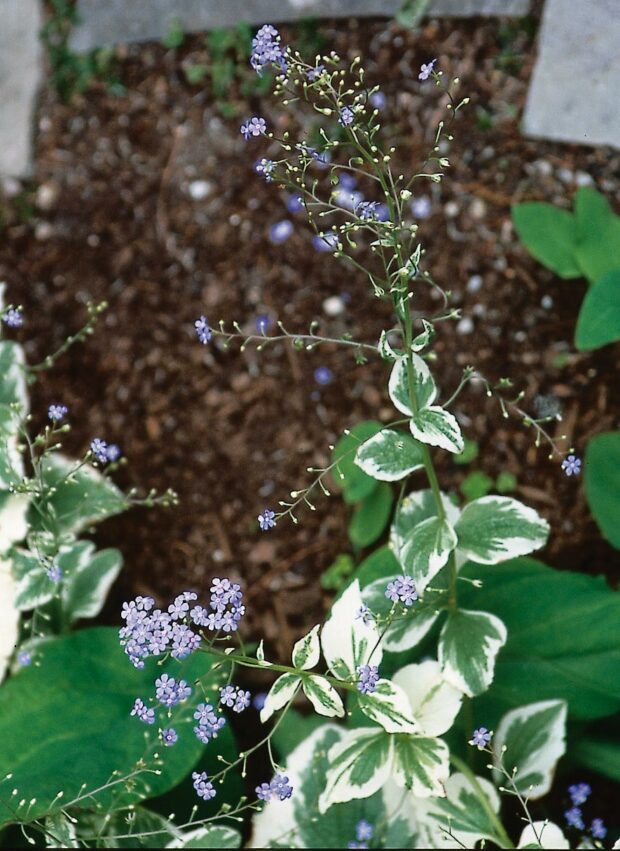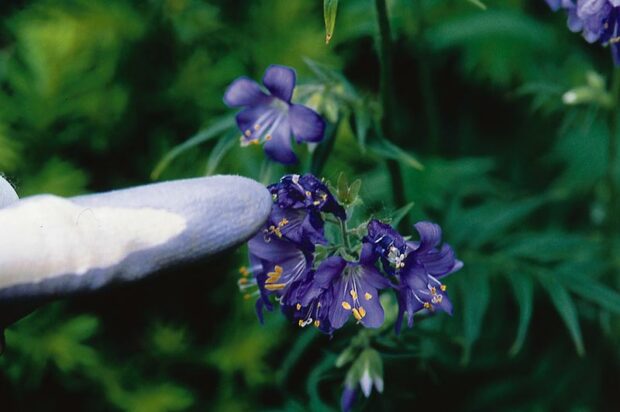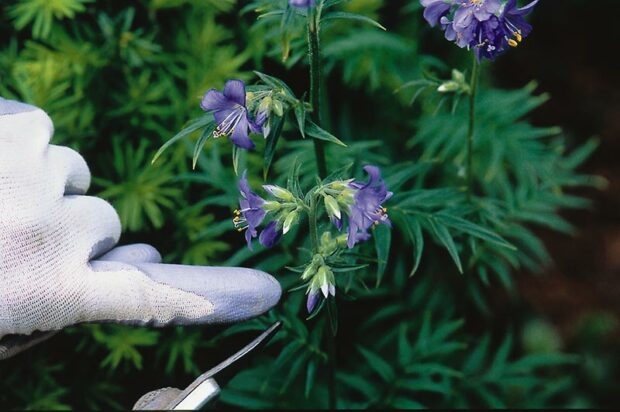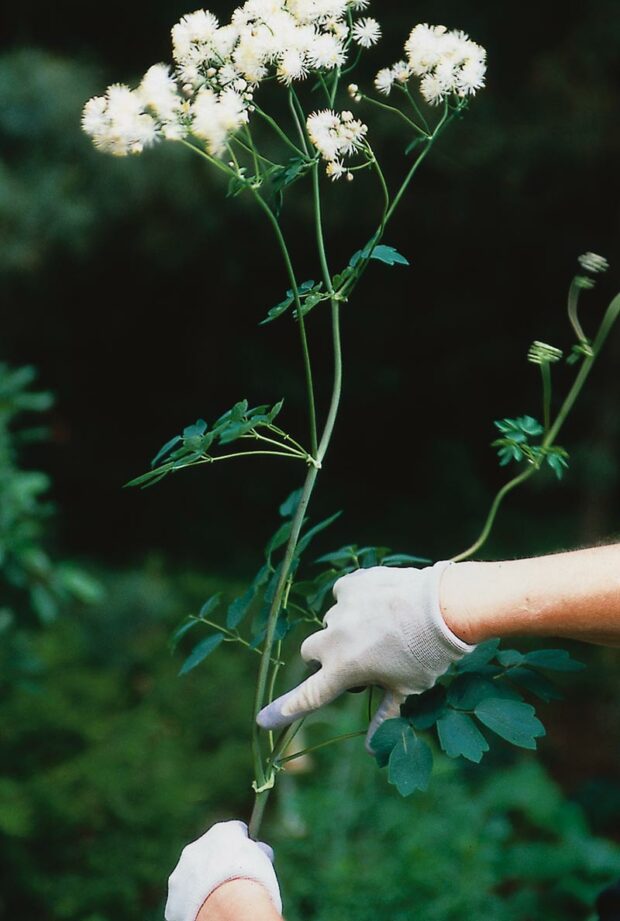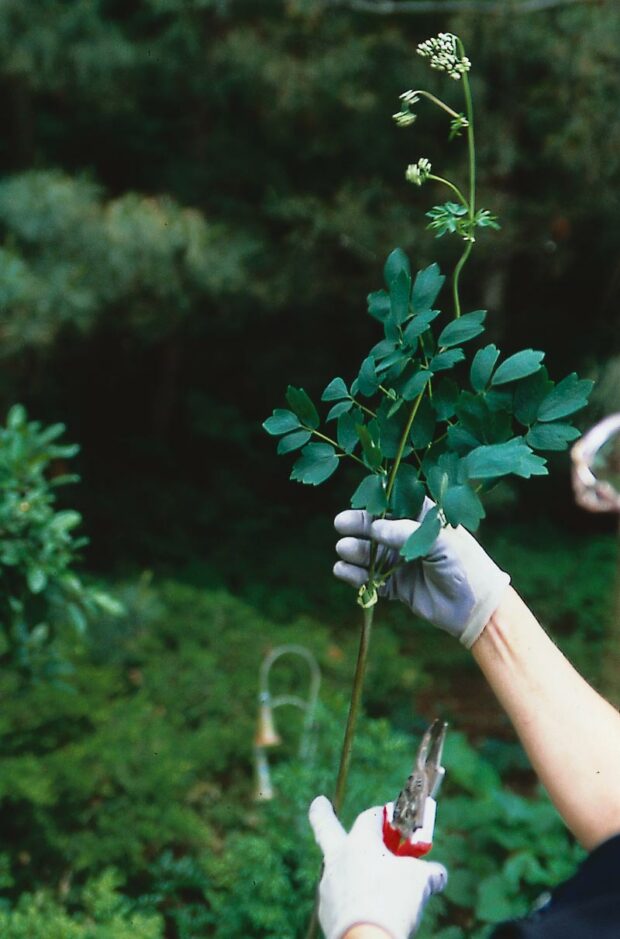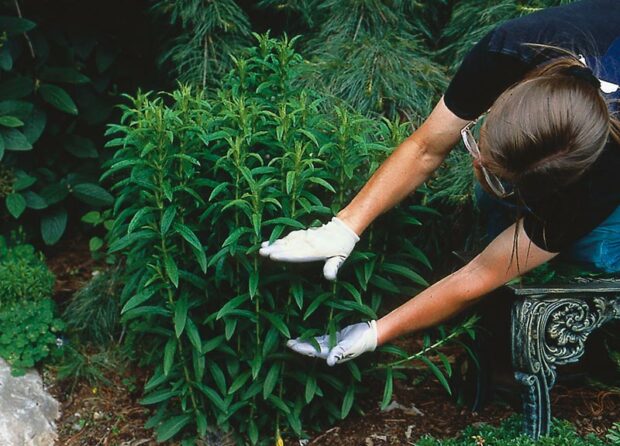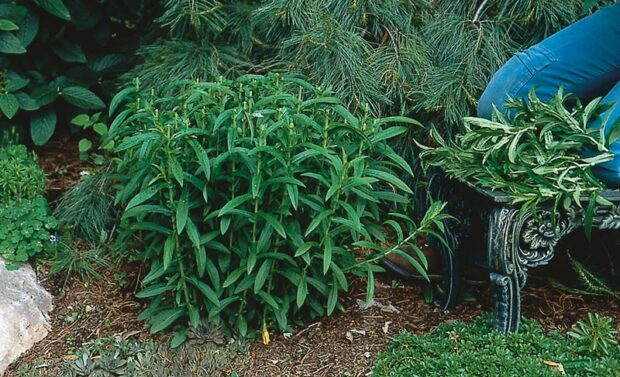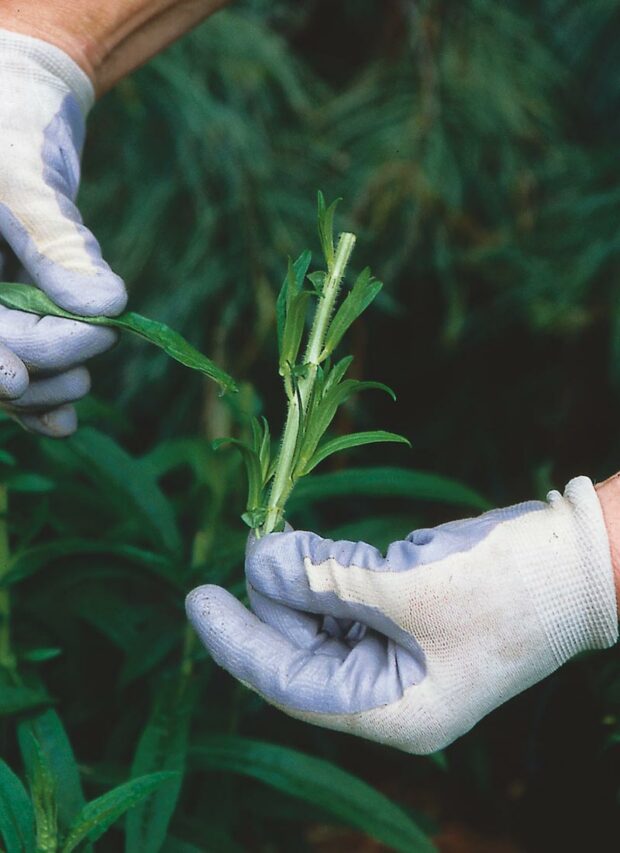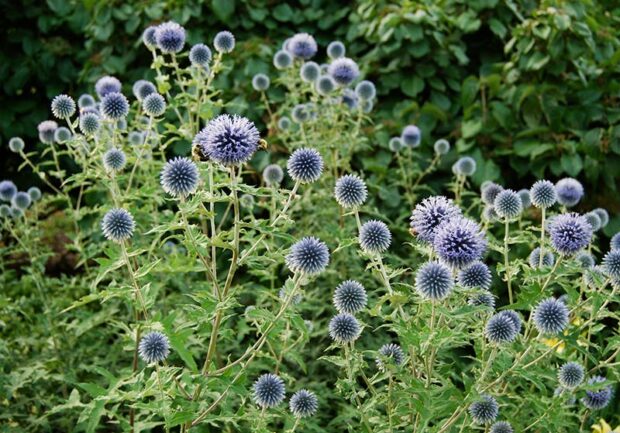
by George Papadelis
When it comes to durable, non-demanding perennials for sun, several great plants come to mind. Yarrow (Achillea), silver mound (Artemisia), tickseed (Coreopsis), purple coneflower (Echinacea), daylilies, black-eyed Susan (Rudbeckia), and ornamental grasses are just a few of these tough, long-lived gladiators of the perennial border. This list would not be complete without globe thistle (Echinops ritro). Even the worst winters, the hottest summers, and the poorest soil leave this perennial smiling year after year.
Don’t let the word “thistle” in the common name scare you. This one rarely gets out of control and the leaves are also much more gentle than their weedy relatives. This thistle produces clusters of 1- to 2-inch round, steel blue flowers in July that usually last into September. They can grow as short as two feet tall, but more fertile soils can help them grow over four feet tall. The flowers are held well above the showy, large, silvery leaves. As the season progresses, however, the foliage tends to become unattractive, so I recommend planting more pleasing, slightly shorter plants in front. This fact alone makes globe thistle best suited for the back of the perennial border.
Globe thistle has several other uses that should be mentioned. It is often grown for its outstanding cut and dried flowers. Globe thistle can be dried the old-fashioned way by stripping off the leaves, tying the stems together, and hanging them upside down out of the sunlight in a dry and warm attic or garage for 2 to 4 weeks. The dried flowers are then stored in paper bags. Ideally, the best and fastest method of drying the flowers is by packing the blooms carefully in silica gel. This product evaporates the moisture so rapidly that the plant’s form and color are retained extremely well, often months after summer has passed.
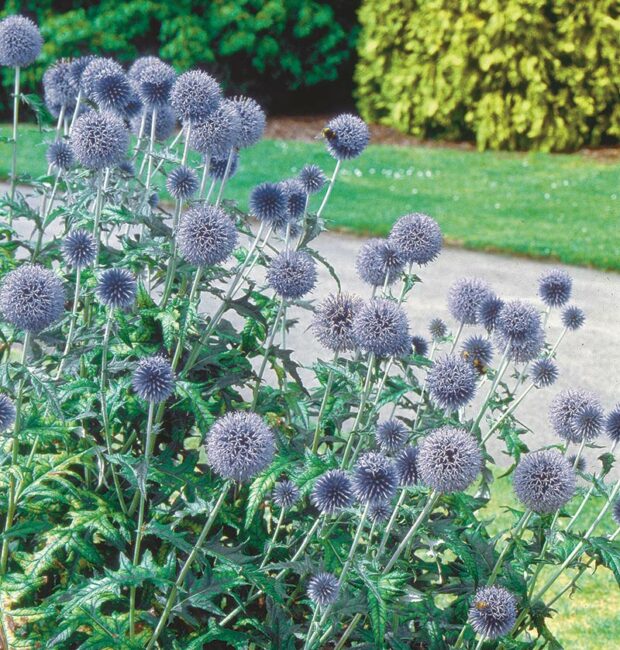
The unique spherical, blue blooms of globe thistle work well when contrasted with other colors and forms. Daisy-like flowers combine nicely with these, so try placing a purple coneflower in front. Russian sage has tiny lavender flowers and wonderful silver foliage that is a must with blue flowers. For another durable trio, try globe thistle with a pink, mildew-resistant bee balm like ‘Marshall’s Delight’ and the vibrant gold flowers of black-eyed Susan. For a maize and blue look, try positioning the flat, yellow-colored flowers of yarrow (Achillea) in front of your globe thistle. All of these plants are great summer performers that will tolerate poor soil and full sun.
The species globe thistle (Echinops ritro) can be grown easily from seed, but these plants are readily available and relatively inexpensive. Where soil is more fertile, plants may grow tall enough to require staking. Clumps of mature globe thistle should be divided to maintain their vigor and size. This can be done in spring after the plants are at least three years old. Globe thistle can also be used in meadow or prairie plantings where little or no maintenance would be required. Even deer rarely snack on the coarse leaves and tough flowers. However, bees, hummingbirds, and especially butterflies find globe thistle irresistible.
A few varieties are available that have slight variations from the species. ‘Taplow Blue’ has a similar silvery-blue color, but has larger flowers that measure up to three inches across. It usually grows somewhat taller at 4 to 5 feet. For a deeper blue color, try ‘Veitch’s Blue.’ This one is more popular in Europe and boasts larger clusters of flowers on each stem. This one grows about three feet tall. Both of these varieties may be difficult to find locally in garden centers.
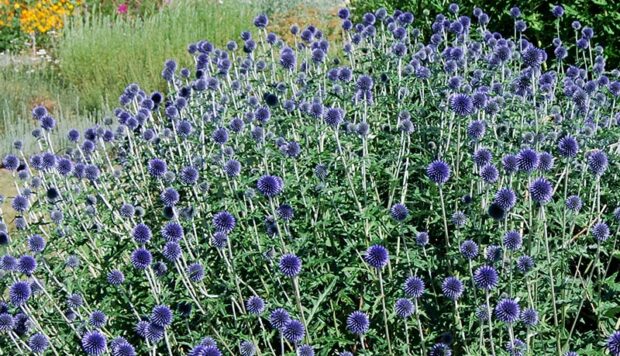
As you can see, globe thistle is hardy, undemanding, versatile, and useful in the garden. As Ann Lovejoy says in her book The American Mixed Border: “Globe thistles…with their needle-studded flower balls poised on long stalks like so many vegetable maces, have strong garden presence. Even when out of bloom, their great, toothed leaves, rich green backed with gray, rise powerfully amid shrubby-looking peony foliage and grassy daylilies.”
Globe thistle fits nicely into any sunny border or a garden dedicated to cut flowers, hummingbirds, or butterflies. So try it out and don’t be intimidated by its common name—it could be worse: even wormwood, sandwort, and pig squeak are all good plants!
Globe thistle
Botanical name: Echinops ritro (ECK-ih-nops RYE-tro)
Plant type: Perennial
Plant size: Height: 2-5 feet, width: 2-3 feet
Habit: Upright, erect
Hardiness: Zone 3
Flower color: Shades of rich blue
Flower size: 1- to 3-inch diameter
Bloom period: July-September
Leaf color: Silvery, dark green; underside is gray
Leaf size: Length: 6-8 inches, width: 2-4 inches
Light: Full sun
Soil: Best in poor, well-drained soil
Uses: Back of perennial border, cut and dried flowers
Companion plants: Purple coneflower, Russian sage, bee balm, black-eyed Susan
Remarks: Easy to grow. Place smaller plants around base, since foliage becomes unattractive as the season progresses.
George Papadelis is the owner of Telly’s Greenhouse in Troy and Shelby Township, MI.
Related: After the Fall: Late-Season Plant Staking
Elsewhere: Gardening for pollinators: Smart plants to support pollinators

